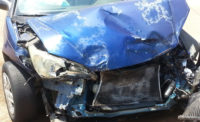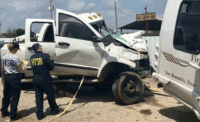The National Transportation Safety Board (NTSB) doesn’t yet know what caused the fatal Tesla-truck crash in Florida earlier this year, but it has concluded that the Tesla driver was using the the vehicle’s advanced driver assistance features Traffic-Aware Cruise Control and Autosteer lane-keeping assistance.
The car was also equipped with automatic emergency braking that is designed to automatically apply the brakes to reduce the severity of or assist in avoiding frontal collisions.
The May 7, 2017 collision occurred on Highway 27A, near Williston, Florida.
A preliminary report on the investigation into the crash involving a 53-foot semitrailer in combination with a 2014 Freightliner Cascadia truck tractor and a 2015 Tesla Model S notes that according to system performance data downloaded from the car, the indicated vehicle speed was 74 mph just prior to impact, and the posted speed limit was 65 mph.
The report does not contain any analysis of data and does not state probable cause for the crash.
A team of five NTSB investigators traveled to Williston to conduct the on-scene phase of the investigation. The team used three-dimensional laser scanning technology to document the crash location, the damaged trailer and the damaged car. NTSB investigators continue to collect and analyze performance data from the car’s multiple electronic systems. This data along with other information collected during the on-scene phase of the investigation will be used to evaluate the crash events.
All aspects of the crash remain under investigation. While no timeline has been established, final reports are generally published 12 months after the release of a preliminary report.



